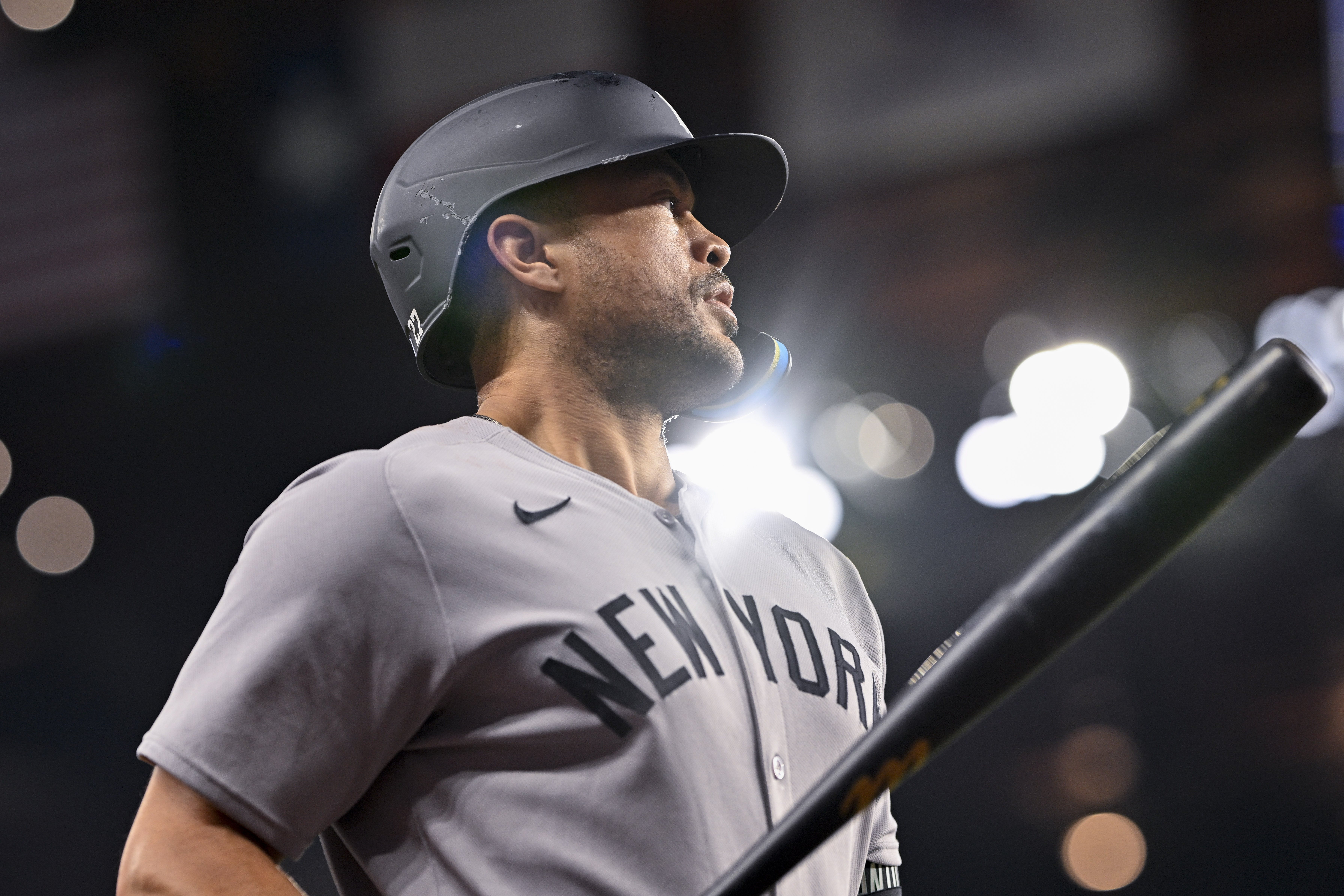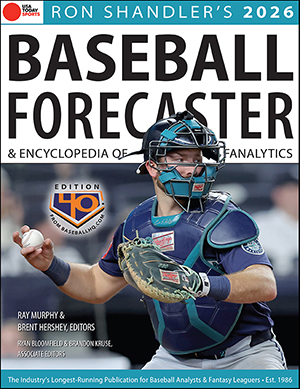
Swings and Takes: Jacks and the Beanstock
Cruz Missiles Locking In
Oneil Cruz (CF, PIT) is a natural lightning rod of a player, as at 6’7” 240 pounds he is clearly among the most physically gifted players in all of baseball, even if he has not always funneled those gifts into productivity. A player who can hit balls as hard and far as Aaron Judge and Shohei Ohtani will naturally disappoint fans if he hits .240/.316/.440, as Cruz has over his career, and 2025 on the surface looks like more of the same. The process to get there is different in a way that may portend to what he ultimately develops into.
In the hunt? BaseballHQ.com can help you snag the title. Unlock all of our insights like these for the rest of the season: Subscribe to BaseballHQ.com.
Cruz has slashed .209/.318/.412 in 2025, with 16 HR and 29 SB providing significant value to fantasy managers but seemingly leaving a lot of meat on the bone so to speak. The Cruz story in some ways is pretty simple: he is massive, he swings and misses a lot, and he kills the ball when he connects. The 2025 version of Cruz is even more extreme than ever, as he is tops in baseball in average exit velocity (96.4 mph, higher than Judge even by one mph on average), Barrel% (22.3%), and is third in hard hit rate (behind Ohtani and Kyle Schwarber), while his K% is up 2%, to 32.3%. Hard hit rate is not the only similarity between Cruz and Schwarber, as Cruz seems to be taking an approach reminiscent of Schwarber at the plate.
While Cruz has always had the profile of a three true outcomes player (walks, strikeouts, HR), the walks had lagged for the first two full seasons of his career (2022 and 2024, he lost most of 2023 to injury), as he walked at roughly a league average rate, and chased at a well above-average clip. In 2025, Cruz has changed this. His walk rate is up nearly 5% from 2024 (at 13%), and his Chase rate is down by approximately 5%. This appears to be a conscious choice from Cruz as opposed to improved pitch recognition, as his overall swing rate is down approximately 6%, with both his Zone Swing rate and Chase Rate decreasing at roughly the same 6% rate. We would like to see Cruz dropping his chase without losing aggressiveness in the zone, as that would indicate a true leap in skill, but instead this appears to be a choice.
This is a potentially sustainable approach from Cruz, as swinging less is a good idea for a hitter with his level of power, but two things are holding him back: 1) breaking balls and 2) not lifting enough. Cruz is seeing more breaking balls than ever, up roughly 5% from 2024 to be roughly an equal ratio of fastballs to breaking balls (roughly 41%). This is a natural adjustment for pitchers because Cruz has continued to not do anything against breaking balls. In 2025, Cruz is hitting .151 against breaking balls with a 46.7 Whiff%. He is chasing breaking balls approximately 5% less, and has a good .463 xSLG on them, but consistently cannot hit them.
While Cruz may have a hard time truly mastering breaking balls, one thing he could possibly improve at is getting to his power more consistently. Here are the top 10 in exit velocity so far in MLB in 2025:
Top 10 Exit Velocity

Outside of the exit velocity itself, you may notice something if you look at the chart more closely: Cruz is an outlier in terms of average launch angle (LA) in this group, with only James Wood (at 6.1) lower. The best of the three true outcomes guys, such as Judge, Alonso, and Schwarber, can consistently get the ball in the air to take advantage of their power. Cruz is naturally a line drive hitter, and will most likely never have a launch angle as extreme as Schwarber or Alonso, but ideally he would be hitting the ball in the air at least 60% of the time as opposed to his current 54.4% rate. He can continue to hit hard line drives, but he needs to get the ball in the air more often to get to more slug.
With the new approach at the plate, we may be seeing the direction that Cruz ultimately goes as a hitter, leaning into his three true outcomes nature and trying to be ultra selective. This is likely a smart choice for Cruz, as it leans into his strengths and improves his overall value by walking more, while also hopefully getting him better pitches to slug.
This approach is a step in the right direction, but there are still differentiators between Cruz and the best of the three true outcomes hitters. Despite Cruz having the potential to be the best of them all in terms of power, he is not taking full advantage of his tools yet. At 26 years old with still limited MLB at-bats, Cruz still has time to get to his 40-50 HR potential. To get there, the roadmap is clear: he needs to get the ball in the air and have a clue against breaking balls to get there, with the former being more achievable.
Turang Brews a Swing Change
The phase “nice little player” is a complimentary and descriptive phrase that is often used in the scouting community to describe a certain niche of player, one who helps a team win by doing little things well and playing the game the right way. A “nice little player” usually does not have standout tools, and has physical limitations that prevent them from having star upside. Brice Turang (2B, MIL) has certainly met that description for most of his MLB career, as a standout fielder, baserunner, and contact hitter, with basically zero power.
The 5’11” 190 pound left-handed-hitting second basemen is now in his third season, and in his first two, he only barreled 20 baseballs out of 777 balls hit into play, with 13 HR and a slugging percentage of .328 over those seasons. He ranked 7th lowest among all qualified hitters in average exit velocity in 2023 before improving to 87 mph in 2024. In 2025 he has taken an even larger leap, as he is averaging 90.6 mph on his batted balls, 3.6 mph faster than in 2024, and is now above-average in exit velocity and hard-hit rate. His slugging percentage does not fully reflect this improvement (.395), but the underlying power numbers are significantly different than they have ever been. Here are two swings, one from 2024 and the other from 2025, that help explain how Turang has put more thump into his swing:
Turang 2024
Turang 2025
While Turang was very short and extremely direct to the ball in 2024, with very limited lower or upper half movement, he has allowed himself to stretch out in 2025. His hands are now significantly higher at the start of his swing, with a larger load, and he is taking a decent-sized leg kick to help generate power. The effectiveness of a leg kick varies greatly depending on the type of hitter, but for a smaller hitter like Turang who needs to use his full body to generate power and has good innate bat-to-ball skills, it can be a good fit.
We can see Turang’s swing changes within the bat tracking data as well from Statcast. He has gone from averaging 66.2 mph on his swings in 2024 to 69.9 mph in 2025, which is a smaller leap than it seems given that he averaged 68.5 mph in 2023, but it is still significant. The larger leap, which is up from both 2023 and 2024, is that he has gone from swinging “fast”, or above 75 mph, on around 3.5% of his swings from 2023-2024 to 13.4% of his swings in 2025. When he wants to let loose and go for an extra base hit, Turang is much more capable of it now in 2025 than he was from 2023-2024.
Turang has added some length to his swing as well, up 0.3 feet from 2023 and 0.7 feet from 2024. With that added length often comes more swing-and-miss, and it has. Turang has gone from an extreme contact hitter in 2024, at 13.8 Whiff%, to 20.9% in 2025. Even with this sacrifice Turang is still around 4% better than league average in Whiff Rate. In other words, he has sacrificed some of his contact ability from 2024 to get to his power in 2025. He had enough to give up, however, and the power gains are well worth it from an overall productivity standpoint.
The next step for Turang, in order to turn this new exit velocity into power production, is to start pulling the ball in the air. Turang, even with these adjustments, will never be an Aaron Judge or James Wood type who can hit the ball out to any field; he needs to pull the ball to get it over the fence. His pull Air%, which is the % of batted balls pulled in the air, has declined each year of his career, from 11.1% in 2023, to 7.6% in 2024, and now 4.9% in 2025. The average MLB hitter pulls the ball in the air 16.6% of the time, and Turang needs to get closer to this in order to hit for power.
Turang has now improved his ceiling by a decent bit as a player now capable of being a 20/20 threat while hitting around .270. He may not fully realize that level of power in 2025, however, as he needs to learn how to harness his newfound power in the air to right field. This is something that can often come with time for a young hitter, and Turang seems poised to take a power production leap sometime in the next few years.








